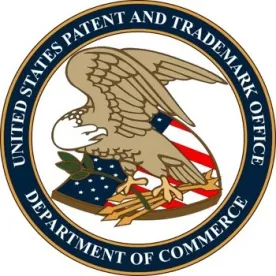On February 28, 2019, the USPTO summarized and explained the recently issued 2019 Revised Patent Subject Matter Eligibility Guidance (2019 PEG) that changes the procedures for determining whether a patent claim is directed to patent eligible subject matter. While a majority of the changes directly impact computer-implemented inventions, the 2019 PEG does change how claims to personalized therapies are examined for patent eligibility. The 2019 PEG slide deck is available here (PEG Slide deck).
Modified Step 2A
The 2019 PEG sets forth a new procedure for Step 2A of the patent eligibility analysis by creating a new two-prong inquiry for determining whether a claim is directed to a judicial exception to patent eligibility. It creates new groups of subject matter considered as an “abstract idea,” and clarifies when a claim is not “directed to” a judicial exception if the judicial exception is integrated into a practical application of that exception. Step 1 and Step 2B of the prior analytical framework remain unchanged.
Revised Step 2A creates categories of abstract ideas. One category – mental processes (defined as concepts performed in the human mind, (including an observation, evaluation, judgment, and opinion)) captures diagnostic methods used in personalized medicine, as observed by the U.S. Supreme Court in Mayo Collaborative Servs. v. Prometheus Labs., Inc. 566 U.S. 66, 71 (2012). Importantly, if the claim does not recite subject matter that falls within the enumerated groupings (mathematical concepts, certain methods of organizing human activity, and mental processes), then the claim should not be treated as reciting an abstract idea and it is patent eligible.
Under the new analysis, there is no longer an evaluation of well-understood, routine, conventional activity in Step 2A. Thus, in the context of personalized diagnostics, if the claim and invention uses conventional techniques, this in and of itself will not make the claim patent ineligible. As noted on slide 32 of the 2019 PEG USPTO training deck, a claim that includes conventional techniques may still integrate those conventional techniques into a practical application of the exception making the claim eligible. The use or integration of conventional techniques is not evaluated unless the analysis proceeds to Step 2B.
Patent Eligibility of Personalized Therapies Explained
The 2019 PEG also incorporates the holding of Vanda Pharm. Inc. v. West-Ward Pharm. Int’l Ltd., 887 F.3d 1117 (Fed. Cir. 2018) into Step 2A. The 2019 PEG “expands this consideration to encompass treatment and prophylaxis limitations, and to cover limitations that apply any type of judicial exception (not just laws of nature).” See slide 27. Under the 2019 PEG, the following factors are now considered in determining patent eligibility of treatment or prevention claims:
“-The particularity or generality of the treatment or prophylaxis limitation(s);
-Whether the limitation(s) have more than a nominal or insignificant relationship to the exception(s); and
-Whether the limitation(s) are merely extra-solution activity or a field of use.”
Quoting slide 28.
Thus, for a treatment claim that integrates a diagnostic assay (now within the mental process category of an “abstract idea”) into a treatment , the treatment or prophylaxis must be particular so that it does not encompass all applications of the judicial exception(s) and must have a significant relationship to the exception(s). The treatment also must be more than an extra-solution activity or field of use. See slides 29 to 31.
Laws of Nature and Natural Phenomena
Importantly, while the analysis of abstract ideas has changed, the UPSTO repeatedly emphasized that for laws of nature and natural phenomena, the 2019 PEG does not change the analysis of claims directed to these two categories of judicial exceptions to patent eligible subject matter.
Personalized Medicine
The 2019 PEG provides more clarity to claims that combine a diagnostic assay and a treatment based on the results of the assay. Specific treatment options, e.g., administering a specific treatment (chemotherapy or immunotherapy) to a patient having a favorable genotype for the therapy remains patent eligible. In contrast, appending a generic treatment step to a diagnostic assay is likely be rejected for reciting a judicial exception to patent eligibility.
Public Comments Are Invited
The public is invited to submit comments on the 2019 PEG by March 8, 2019 at eligibility2019@uspto.gov.
Additional materials regarding patent eligibility can be found at the USPTO microsite located at here.




 />i
/>i

